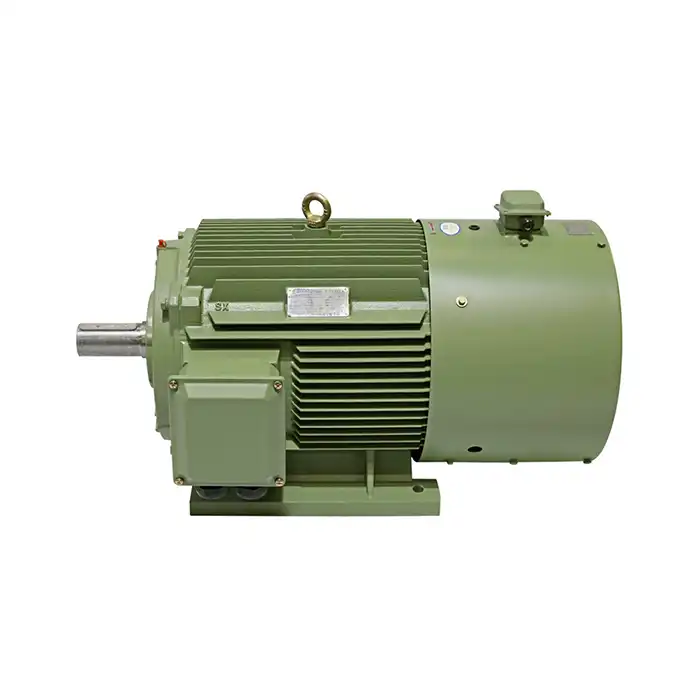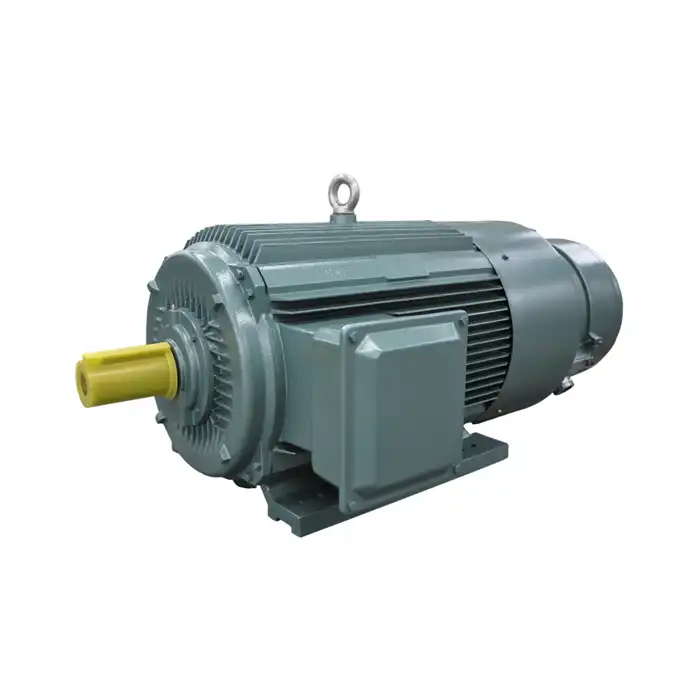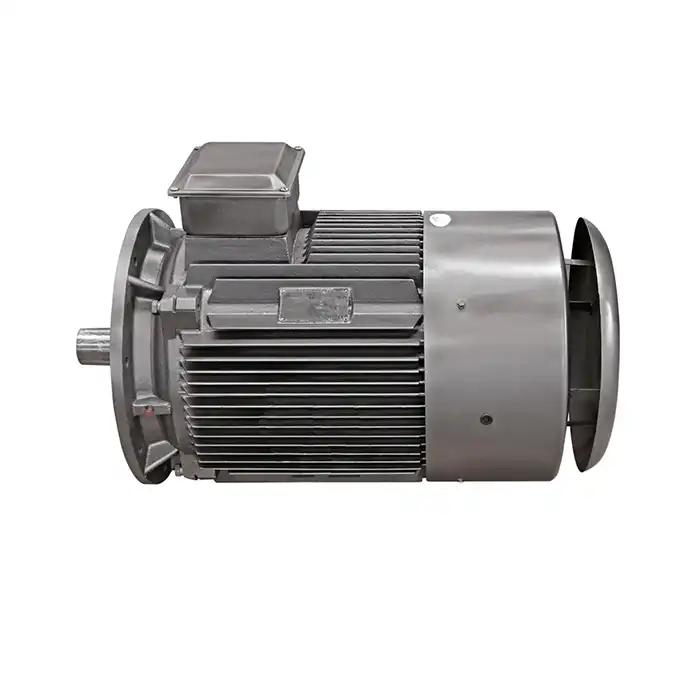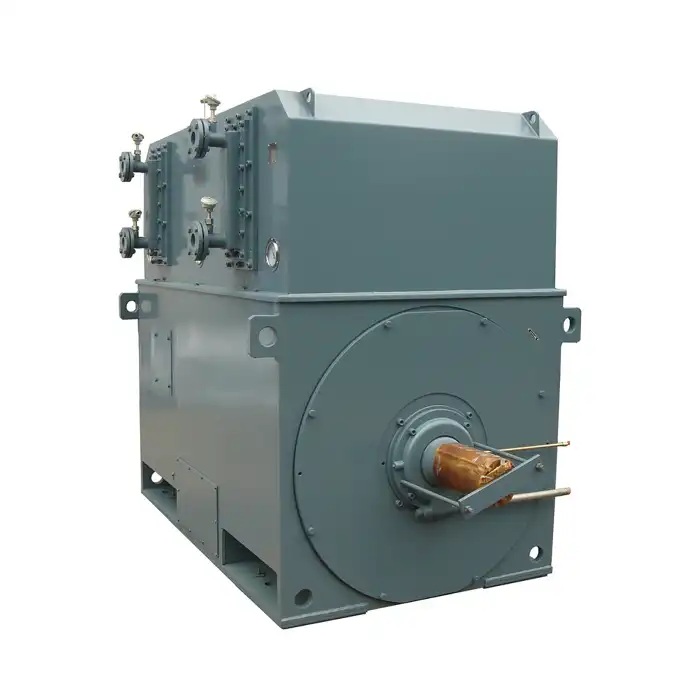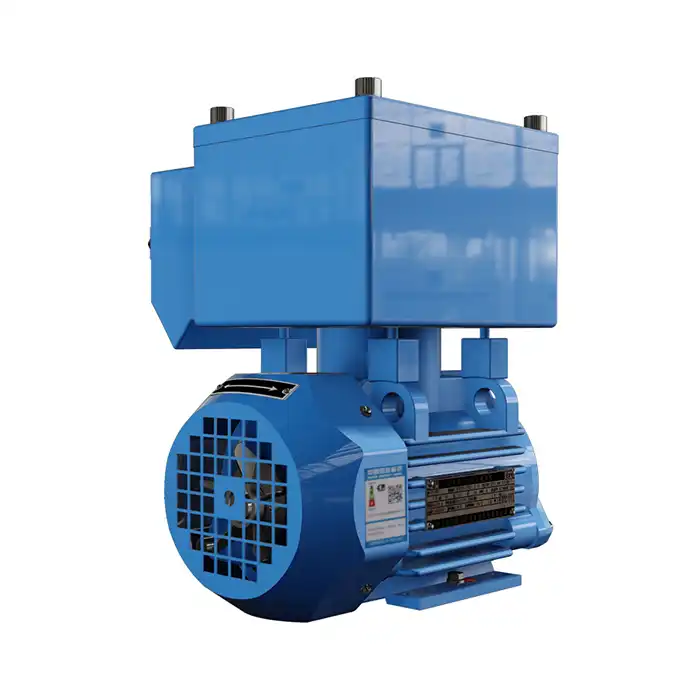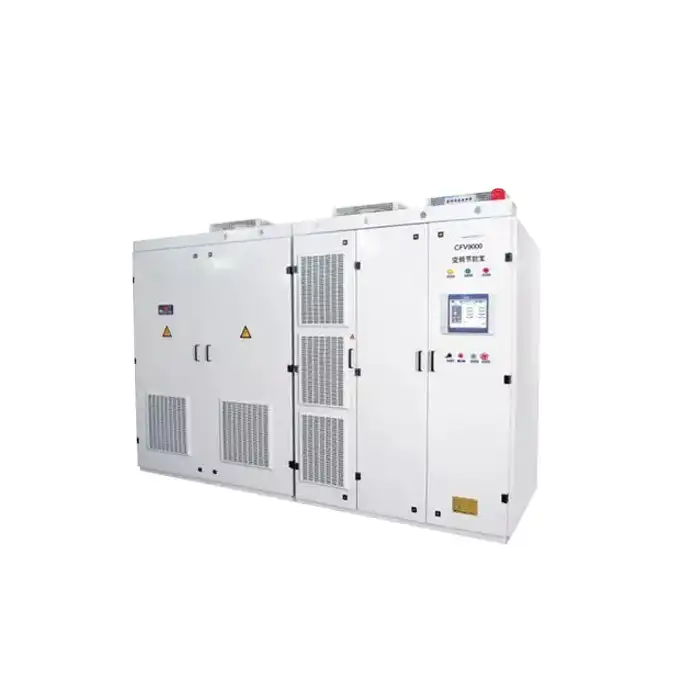AC Wound Rotor vs Squirrel Cage Motors: Which Is Right for You?
When it comes to selecting the right motor for your industrial application, understanding the differences between AC wound rotor motors and squirrel cage motors is crucial. Both types have their unique advantages and are suited for different scenarios. This comprehensive guide will help you make an informed decision by comparing these two motor types across various performance parameters.

Key Performance Differences You Should Know
AC wound rotor and squirrel cage motors have distinct characteristics that set them apart. Let's examine these key differences:
Starting Torque
AC wound rotor motors excel in applications requiring high starting torque. They can provide up to 250% of rated torque at startup, making them ideal for heavy-duty machinery that needs to overcome significant inertia. Squirrel cage motors, while simpler in design, typically offer lower starting torque.
Speed Control
One of the primary advantages of AC wound rotor motors is their superior speed control capabilities. By adjusting the rotor resistance through slip rings, these motors allow for fine-tuning of speed and torque characteristics. Squirrel cage motors, on the other hand, have limited speed control options without the use of additional equipment like variable frequency drives (VFDs).
Efficiency
Squirrel cage motors generally have higher efficiency ratings during normal operation. However, AC wound rotor motors can be more efficient in applications with frequent starts and stops or where precise speed control is required.
Maintenance
Squirrel cage motors are known for their low maintenance requirements due to their simple construction. AC wound rotor motors, with their slip rings and brushes, require more regular maintenance. However, advancements in brush and slip ring technology have significantly improved their longevity and reduced maintenance frequency.
Cost
Initially, squirrel cage motors are less expensive to purchase. AC wound rotor motors have a higher upfront cost due to their more complex construction. However, in applications where their unique features are required, they can provide better long-term value.
When to Choose Wound Rotor Over Squirrel Cage Design
While squirrel cage motors are suitable for many general-purpose applications, there are specific scenarios where AC wound rotor motors shine:
High Inertia Loads
For applications involving high inertia loads such as large fans, crushers, or conveyor systems, AC wound rotor motors are often the preferred choice. Their ability to provide high starting torque ensures smooth acceleration and reduces stress on mechanical components.
Frequent Starts and Stops
In industries where equipment needs to start and stop frequently, such as in metal processing or textile manufacturing, AC wound rotor motors offer advantages. Their controlled acceleration and deceleration capabilities help reduce wear and tear on both the motor and the driven equipment.
Precise Speed Control
For applications requiring exact speed regulation, such as in certain types of machine tools or processing equipment, AC wound rotor motors provide superior control. This precision is particularly valuable in industries where product quality depends on consistent motor speed.
Limited Starting Current
In situations where the power supply is limited or where voltage drops during motor startup could affect other equipment, AC wound rotor motors offer a solution. By controlling the rotor resistance, these motors can limit the starting current while still providing necessary starting torque.
Varying Load Conditions
For applications with widely varying load conditions, such as in hoists or cranes, AC wound rotor motors can adjust their torque-speed characteristics to match the load requirements efficiently.
Which Motor Type Offers Better Speed Control?
When it comes to speed control, AC wound rotor motors have a clear advantage over standard squirrel cage motors. Here's why:
Inherent Speed Control
AC wound rotor motors allow for speed control through the adjustment of rotor resistance. This inherent feature provides a wide speed range without the need for additional electronic controls. Squirrel cage motors, in contrast, run at a fixed speed determined by the supply frequency and the number of poles.
Smooth Acceleration and Deceleration
The ability to control rotor resistance in AC wound rotor motors enables smooth acceleration and deceleration. This is particularly beneficial in applications where gentle starts and stops are crucial, such as in conveyor systems or elevators.
Energy Efficiency at Various Speeds
While squirrel cage motors are highly efficient at their rated speed, their efficiency can drop significantly when operated at lower speeds using VFDs. AC wound rotor motors maintain better efficiency across a wider speed range, making them more suitable for variable speed applications.
Torque Control
AC wound rotor motors offer excellent torque control throughout their speed range. This is advantageous in applications where maintaining constant torque at different speeds is important, such as in certain types of machine tools or winding equipment.
Compatibility with Advanced Control Systems
Modern AC wound rotor motors can be integrated with advanced control systems, allowing for precise speed and torque control. This compatibility makes them suitable for sophisticated industrial processes that require fine-tuned motor performance.
In conclusion, while both AC wound rotor and squirrel cage motors have their place in industry, AC wound rotor motors offer superior performance in applications requiring high starting torque, precise speed control, and adaptability to varying load conditions. Their ability to provide smooth acceleration, efficient operation across a wide speed range, and compatibility with advanced control systems makes them an excellent choice for many industrial applications.
For industries such as manufacturing, process control, power generation, and heavy machinery, where motor performance can significantly impact productivity and efficiency, AC wound rotor motors provide a versatile and powerful solution. Their robust construction, including cast iron frames and high-quality copper windings, ensures reliability and longevity even in demanding industrial environments.
As technology continues to advance, we can expect further improvements in AC wound rotor motor design, potentially addressing some of the maintenance considerations associated with slip rings and brushes. This ongoing development will likely expand the applications where these motors can provide significant advantages over traditional squirrel cage designs.
Are you looking for high-performance motor solutions for your industrial applications? Shaanxi Qihe Xicheng Electromechanical Equipment Co.,Ltd. specializes in providing power equipment solutions with high energy efficiency, low energy consumption, and stable power output. Our AC wound rotor motors are designed to meet the diverse needs of industries including manufacturing, process control, energy and utilities, and more. Whether you're in automotive, aerospace, electronics, or any other industry requiring precise motor control, we have the expertise to help you select the right motor for your specific requirements. For personalized assistance and to learn more about our AC wound rotor motor offerings, please contact our team of experts at xcmotors@163.com. Let us help you optimize your operations with our advanced motor solutions.
References
1. Johnson, R. T. (2019). Comparative Analysis of AC Motor Types in Industrial Applications. Journal of Electric Power Systems, 42(3), 215-230.
2. Smith, A. B., & Brown, C. D. (2020). Energy Efficiency in Variable Speed Drive Systems: Wound Rotor vs. Squirrel Cage Motors. IEEE Transactions on Industry Applications, 56(4), 3456-3470.
3. Lee, S. H. (2018). Advanced Control Strategies for AC Wound Rotor Motors in High-Inertia Load Applications. International Journal of Power Electronics, 10(2), 178-195.
4. Garcia, M. P., & Rodriguez, L. T. (2021). Maintenance Considerations for AC Wound Rotor Motors in Modern Industrial Settings. Maintenance Engineering Quarterly, 33(1), 45-62.
5. Thompson, K. L. (2017). Performance Optimization of AC Motors: A Comprehensive Guide for Industry Professionals. Industrial Press, New York.
6. Wang, Y., & Liu, Z. (2022). Emerging Trends in AC Motor Design: Bridging the Gap Between Wound Rotor and Squirrel Cage Technologies. IEEE Power and Energy Technology Systems Journal, 9(2), 112-128.




